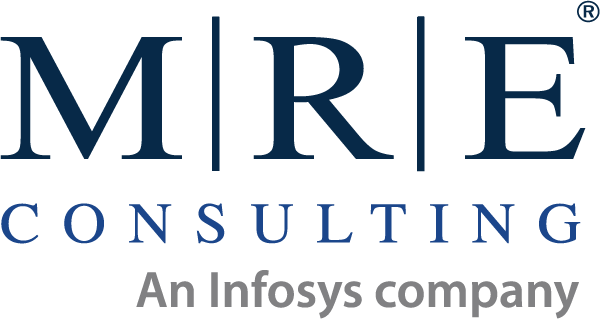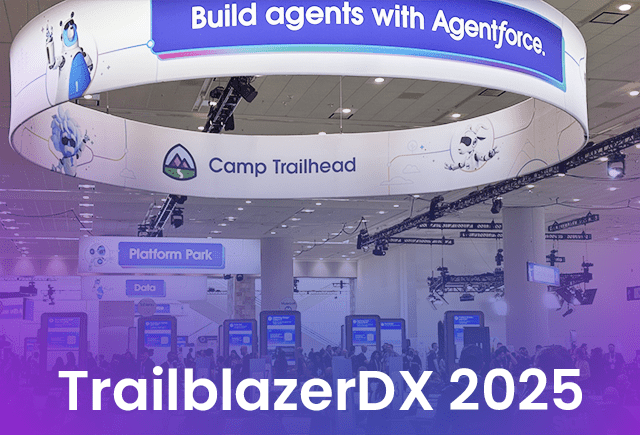By: Ben McCann, Principal, SAlesforce division
Dreamforce 2024 showcased a future where the synergy between humans and AI becomes more powerful than ever. With groundbreaking innovations like Data Cloud and Agentforce, Salesforce is redefining how businesses interact with their data, customers, and technology. From seamless data connectivity to AI-powered agents, the keynotes were packed with insights that promise to elevate efficiency and customer experiences to new heights. Here’s a look at the standout features and what they mean for the future of work.
Agentforce
Sources: Main Keynote, Agentforce Keynote, Meet Agentforce: Humans + AI + Data + Action
Salesforce Copilot is now Agentforce! Agentforce is humans with agents driving customer success together on the Salesforce Platform. Agentforce will be GA in October 2024, with exciting enhancements in February 2025.
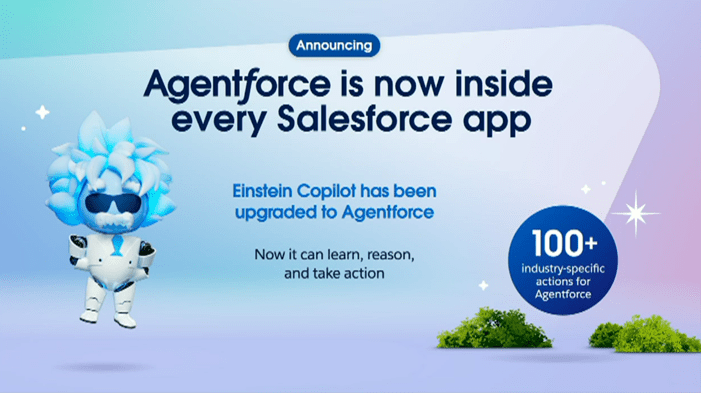
While Copilot was only able to initiate AI agents from a chat prompt, Agentforce agents can be executed from multiple trigger points and take action in what is referred to as the React Loop.

Agents perform actions that are topic driven and are composed of 5 attributes: Role, Data, Actions, Guardrails, Channel.
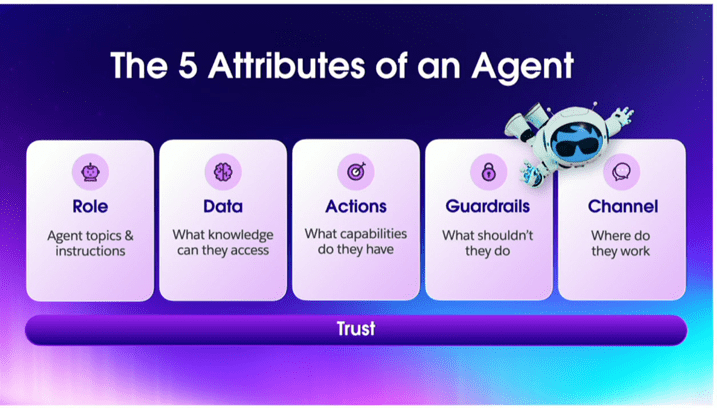
An agent’s role is composed of topics and instructions. A topic is a business process, function or job that an agent can perform. A topic has actions that the agent can perform. Finally, the topic contains instructions that Agentforce consults to identify applicable actions to take to solve a request, using the Atlas Reasoning Engine.

Agentforce uses the Atlas Reasoning Engine to identify and organize the appropriate actions to perform in the necessary order to solve a request.
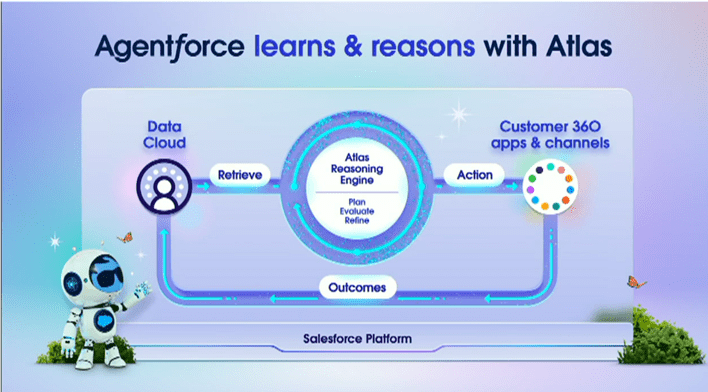
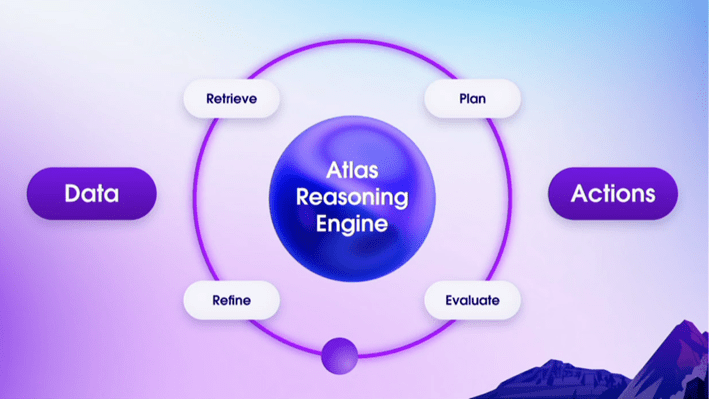
Salesforce has agents for every customer experience and you can create your own custom agents in Agent Builder.
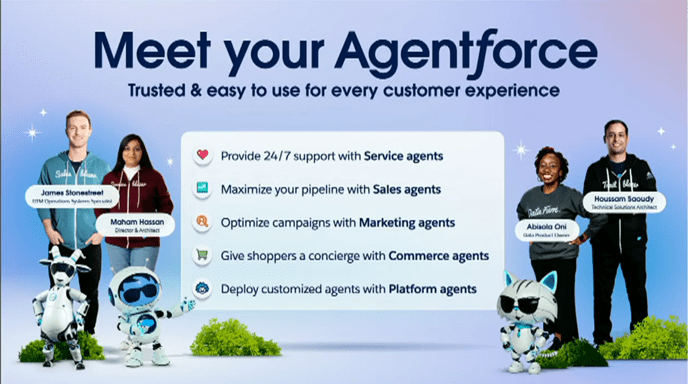
Data Cloud
Sources: Main Keynote, Agentforce Keynote, Put Your Data to Work with Einstein Semantic Search and AI, Developer Keynote, Architect Keynote
Salesforce Data Cloud is a data platform that combines data from various sources into a single, unified customer profile on Salesforce Platform. This platform helps organizations improve customer experiences, drive growth, and boost productivity.

Data Cloud One
Organizations can now connect multiple Salesforce orgs that may be siloed across different departments, regions, or business units and extend all of Data Cloud’s functionalities across all Salesforce instances using a no-code, point-and-click setup. This allows them to create a single Data Cloud instance as the source of truth, enabling data sharing and actions, like automation, calculated insights, and more across all Salesforce orgs, without creating new Data Clouds for each org.
Sub-Second Real-Time Processing
Data Cloud will be able to work much faster from data ingestion to activation by reducing lags between each stage. This also includes real-time Data Graphs.
Unstructured Data Support
Data Cloud supports ingesting unstructured data such as PDFs, emails, and call transcripts. This now also includes video and audio formats.
Transform and index by “chunking” the content and generating vectors. Vectors and Keyword Indexes are stored for use in grounding AI, building automations, and analyzing content with highly relevant responses.
Vector search performs a semantic search against the vector database. Data Cloud will soon be able to execute a Hybrid search which performs a keyword search in addition to vector search.
Data Cloud Sandbox
Data Cloud will have full sandbox support. Data from CRM to Data Cloud sandboxes can be masked for testing and training purposes. Data Kits can be used for deployment and DevOps Center can be used to deploy changes.
Feedback and Gen AI Usage
Gen AI user feedback and AI request/response reporting is now available. The feedback objects also support SOQL query retrieval.
Customer 360
Sources: Main Keynote, Salesforce Foundations: Quick Look trail
Marketing, Commerce, Revenue & Orders, Tableau, and Slack are now on the Salesforce Core Platform.

Salesforce Foundations is a new, no-cost addition to your existing CRM. The suite gives Salesforce customers on Enterprise and higher editions the power of Data Cloud, and access to essential Salesforce sales, service, marketing, and commerce capabilities. This suite is built into your existing CRM, and provides new functionality to give you a more robust 360-degree view of your customers.
What’s new in Prompt Builder
Sources: What’s New in Prompt Builder, Retrieval Augmented Generation: Quick Look trail, Architect Keynote
Build prompts once and reuse them everywhere to embed generative experiences in the flow of work. Salesforce is investing in Prompt Builder areas of Data, Trust, and Availability.
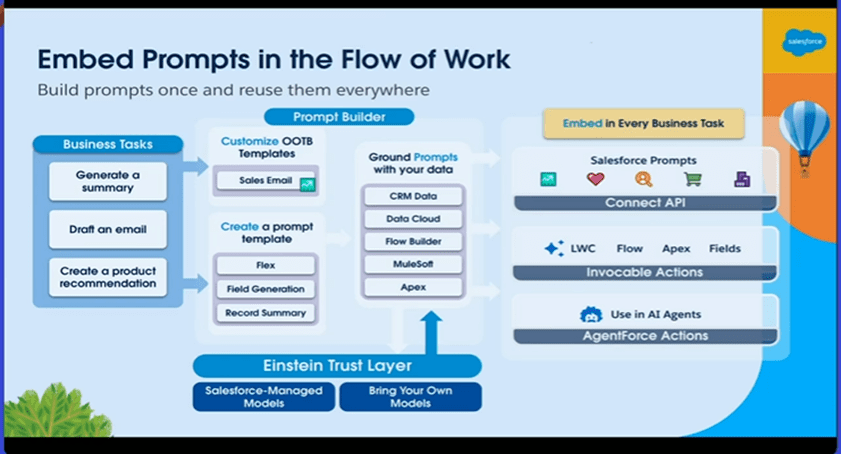
Data
Improve prompt accuracy by providing more options to insert relevant data input including CRM Data, Semantic Search, Flows, Data Cloud and Apex.
- Use Record Snapshot to ground your prompt templates with an entire record.
- Implement Retrieval Augmented Generation (RAG) by adding Einstein Search Data Retrievers to your prompt templates to retrieve relevant information from a knowledge store containing structured and unstructured content and augment the prompt by combining this information with the original prompt before sending to the LLM to generate a response.
Trust
Enhance trust in prompt with additional data privacy and safeguards.
Einstein Trust Layer Data Masking
- Pattern-Based: Uses a combination of data patterns, context words and machine learning models to automatically identify and mask sensitive data. Pattern-Based data masking is applicable to all text in a prompt but is less predictable due to its probabilistic nature.
- Field Sensitivity-Based: Uses metadata in Salesforce fields to identify and mask that data in the fields. Requires manually tagging sensitive fields. Field Sensitivity-Based data masking is more predictable because it can be applied to any Salesforce field.
Prompt Performance Metrics
- View metrics such as Generation and Feedback Count for prompt templates
Availability
Increase Prompt Builder availability across more locales, languages, and models
Expanded Localization
- A prompt response is automatically rendered into the user’s language (if supported) or English, even if the prompt template itself is in another language, or if it instructs the LLM to respond in a specific language. Supported languages are Dutch, English, French, German, Italian, Japanese, Portuguese, Spanish, and Swedish.
Developer Tools
Sources: Developer Keynote
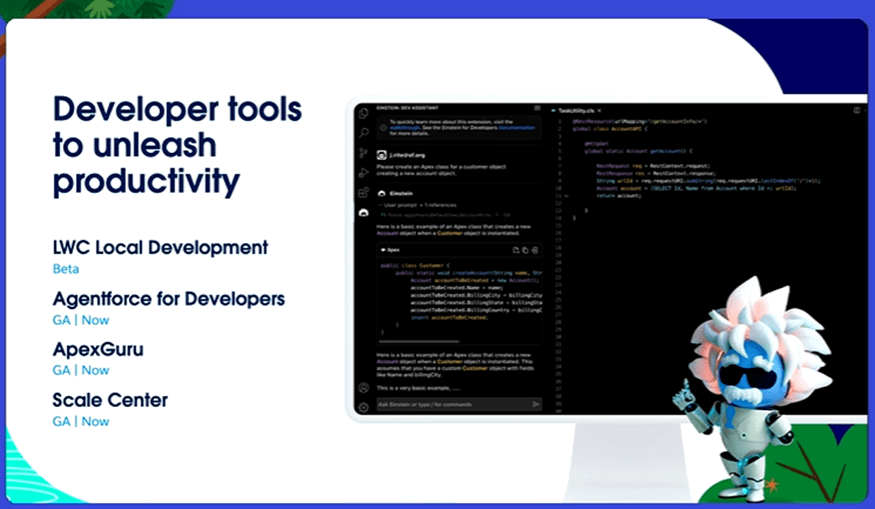
Einstein Models API
The Models API is available to make calls directly to an LLM without using a prompt template. The API methods can be called from Apex or external REST-based systems and tools like Postman.
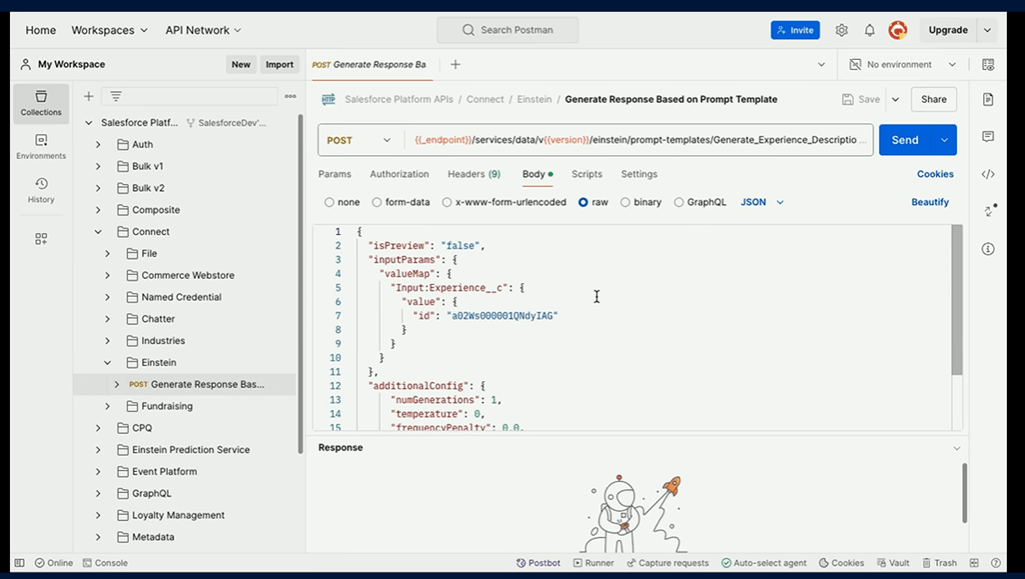
LWC Local Development
Changes made to LWC files in Salesforce Code Builder / Visual Studio Code with Salesforce Extensions are auto-deployed to the connected Salesforce environment upon save and the Salesforce environment is refreshed real-time upon deployment. Previously, developers were required to manually deploy LWC components and then refresh their environment pages.
Agentforce for Developers
Einstein for Developers is now Agentforce for Developers. Ask Agentforce to perform tasks for you such as creating an Apex Class. Use the “/” commands to execute ready made prompt templates to explain code in the open tab, write documentation for the given code block, or generate a test case for the selected Apex Class method.
ApexGuru
Use AI and machine learning models to analyze Apex classes and entry points, giving you critical code recommendations that improve your implementation. ApexGuru can also be run to scan a file directly in Salesforce Code Builder / Visual Studio Code with Salesforce Extensions.

Want to learn more? Catch the replays on Salesforce+ !
